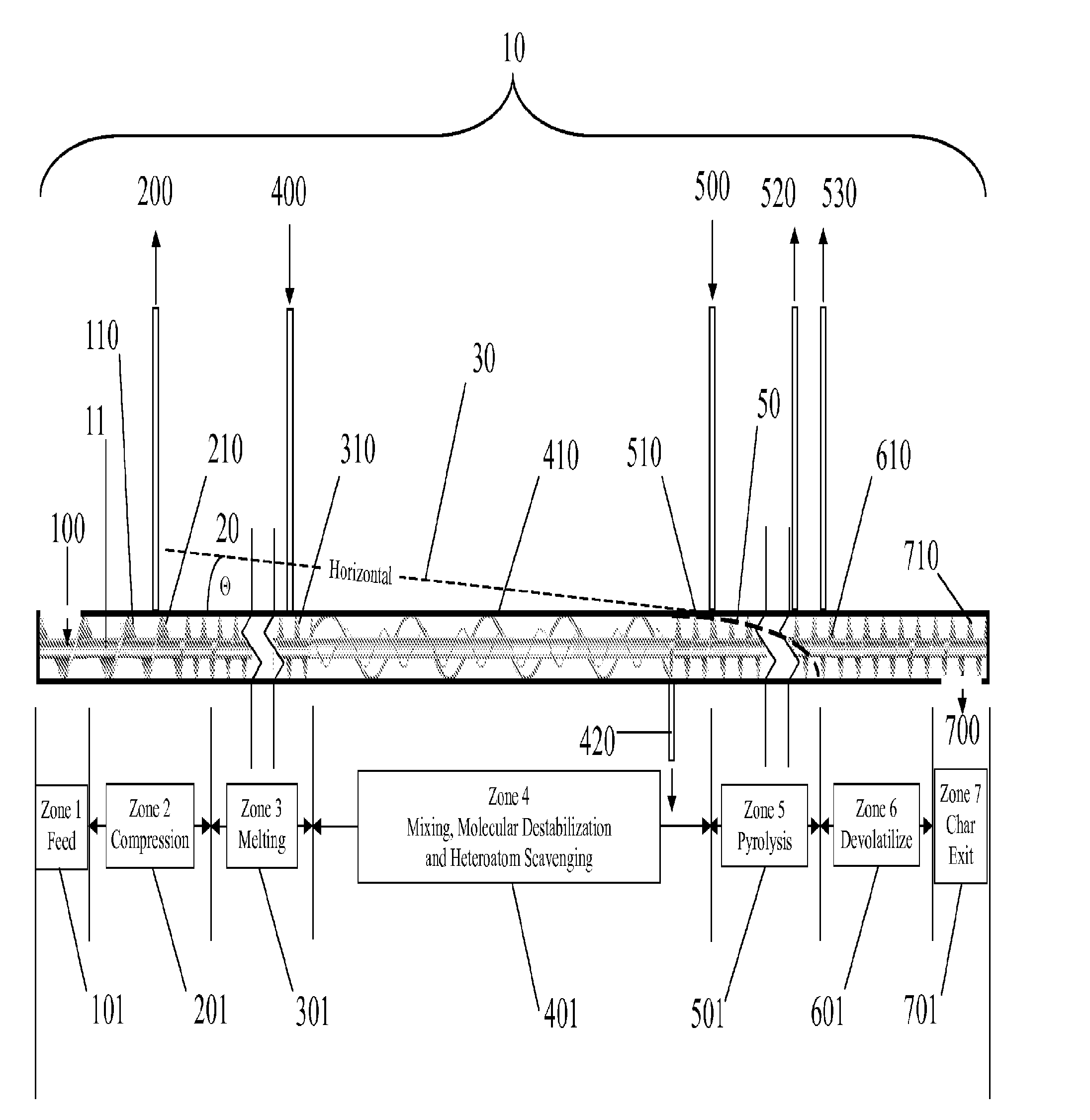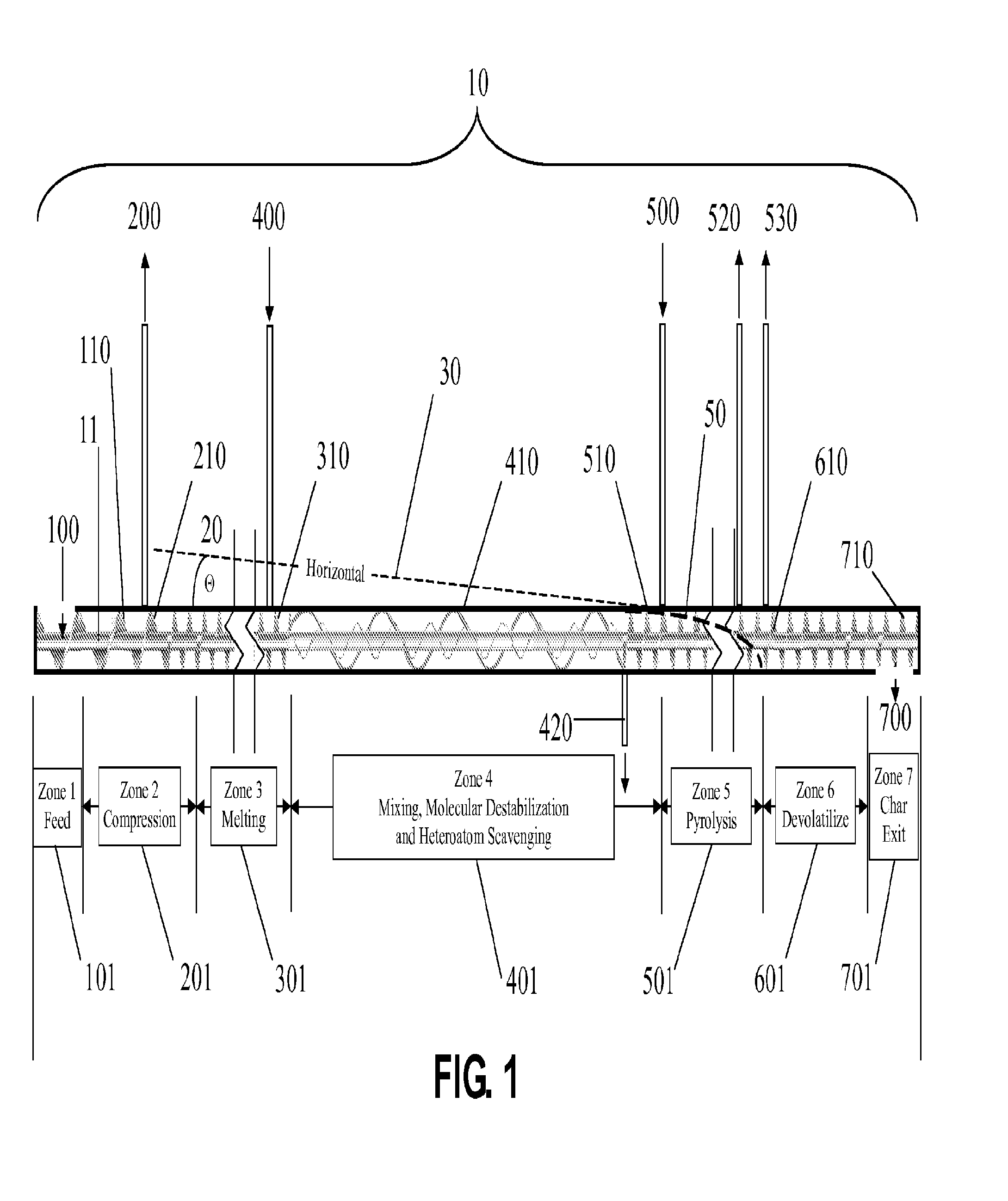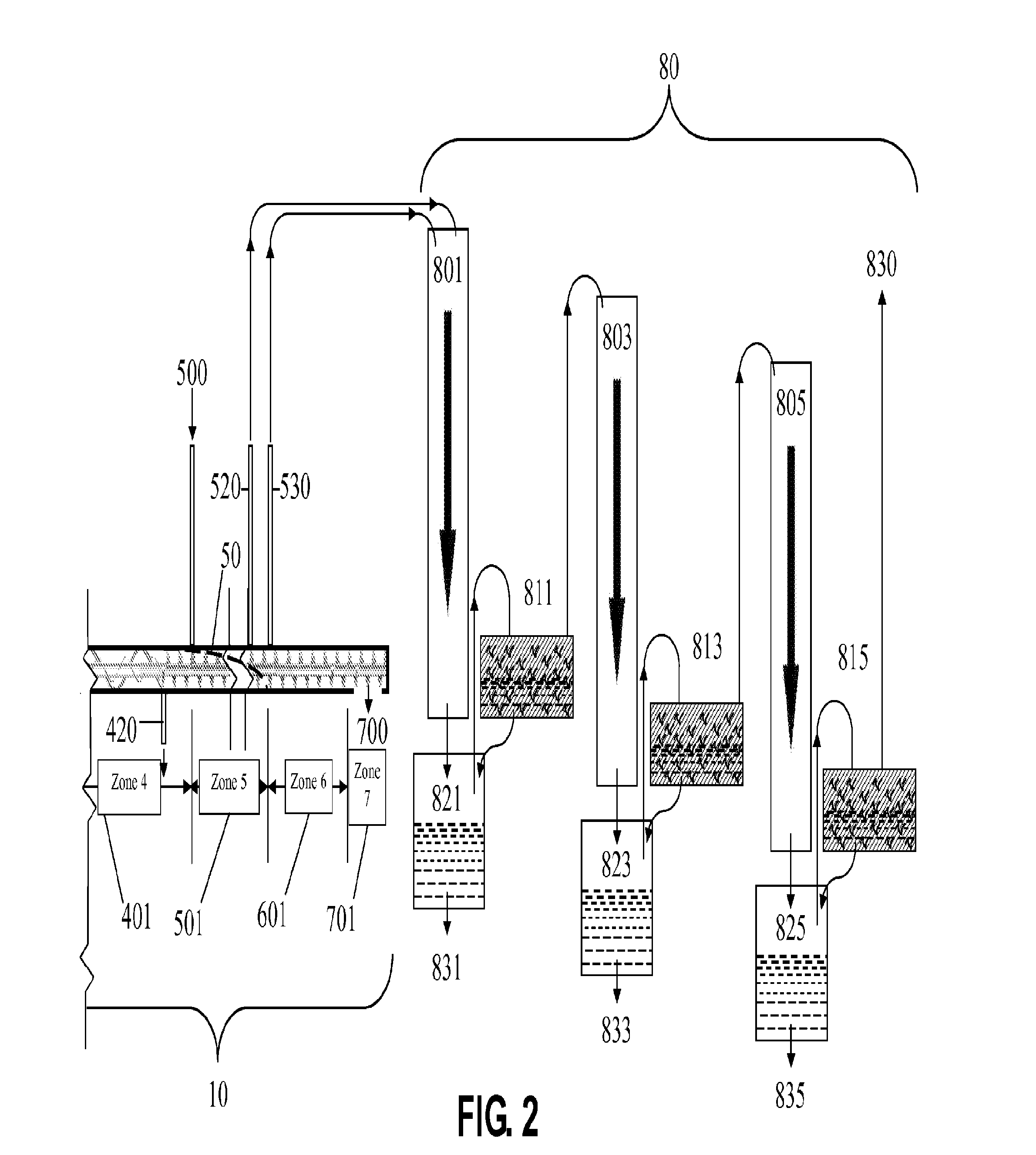Prior art involving pyrolytic
decomposition of polymers largely relies on batch, semi-batch or serial batch processes limited in commercially viable application by their operating complexity and inability to continuously process mixed, poorly sorted and / or contaminated
polymer waste without
fouling.
Chemical
depolymerization has mainly been limited to
decomposition of polyesters e.g. PET, and polyurethanes, with secondary application to polyamides, polycarbonates and polyacetals.
This method is generally restricted to
decomposition of condensation polymers, targeting
monomer yield.
Batch, semi-batch and serial batch processes experience difficulty in efficiently achieving and maintaining control of reaction temperatures and
residence times due to problems resulting from, among other things, inefficient
heat transfer through the waste polymer as this polymer appears to exhibit poor
thermal conductivity.
Unlike continuous processes, which achieve a dynamic process equilibrium thereby maintaining control of reaction temperatures and
residence times, batch, semi-batch and serial batch processes are continually in a state of disequilibrium, posing chronic control challenges with every process cycle and acute problems of reactor
fouling.
Other variables, including catalysts, are optimizers; although catalytic
cracking and reforming offers advantages of polymer breakdown at lower temperatures and higher rate with added control on product quality, catalytic
cracking poses challenges including
process complexity, deposition of residues hindering activity, poisoning of catalysts, high capital and
operating cost of catalyst reactors, and cost of disposal of spent catalyst.
Prior art systems and processes have not achieved wide acceptance or success involving pyrolytic decomposition of polymers and this has been attributed to high operating costs, inability to consistently process contaminated waste streams and waste streams of varying composition, the prohibitively high cost or lack of market availability of uncontaminated
raw material streams, inability to reliably and efficiently control
temperature and pressure process conditions, inability to consistently supply adequate quantities of in-specification
raw material to plants requiring high volumes of material to sustain operations, inability to
control system fouling by
char,
terephthalic acid,
benzoic acid, minerals, metals and the like, attempts to produce fuel having comparatively narrow ranges of market-driven specifications from widely varying
raw material compositions, inability to control
heteroatom content of product oil thus limiting
market acceptance of the products, inability to consistently and effectively manage safety issues attributed to worker
exposure to hazardous vapors and solids in every
batch reactor cycle, and generation of
hazardous waste including but not limited to
char, waste water and off-specification hydrocarbonaceous liquids.
The repeated thermal cycles experienced by these systems have poor
thermal efficiency resulting in overconsumption of energy to complete the polymer conversion.
Moreover, poor thermal
conductivity of polymer raw materials in a batch reactor, such as in Garrison, even with
internal heat transfer fluids deployed results in varying degrees of raw material
thermal transfer capacity across the complex cross section of the batch reactor.
Additional complexity arises from change in thermal
conductivity of the raw material as its composition changes as it decomposes.
Unless those aromatic and polynuclear aromatic hydrocarbons are removed from the char or unless this adsorption is prevented, disposal of the char created by the batch process can be rendered prohibitively expensive if it is characterized as a
hazardous waste.
This
transfer point results in operational challenges as a result of fouling.
This prior art employs a continuous process inclined screw having no means for control in rate of temperature ramp and control of
residence time.
 Login to View More
Login to View More  Login to View More
Login to View More 


